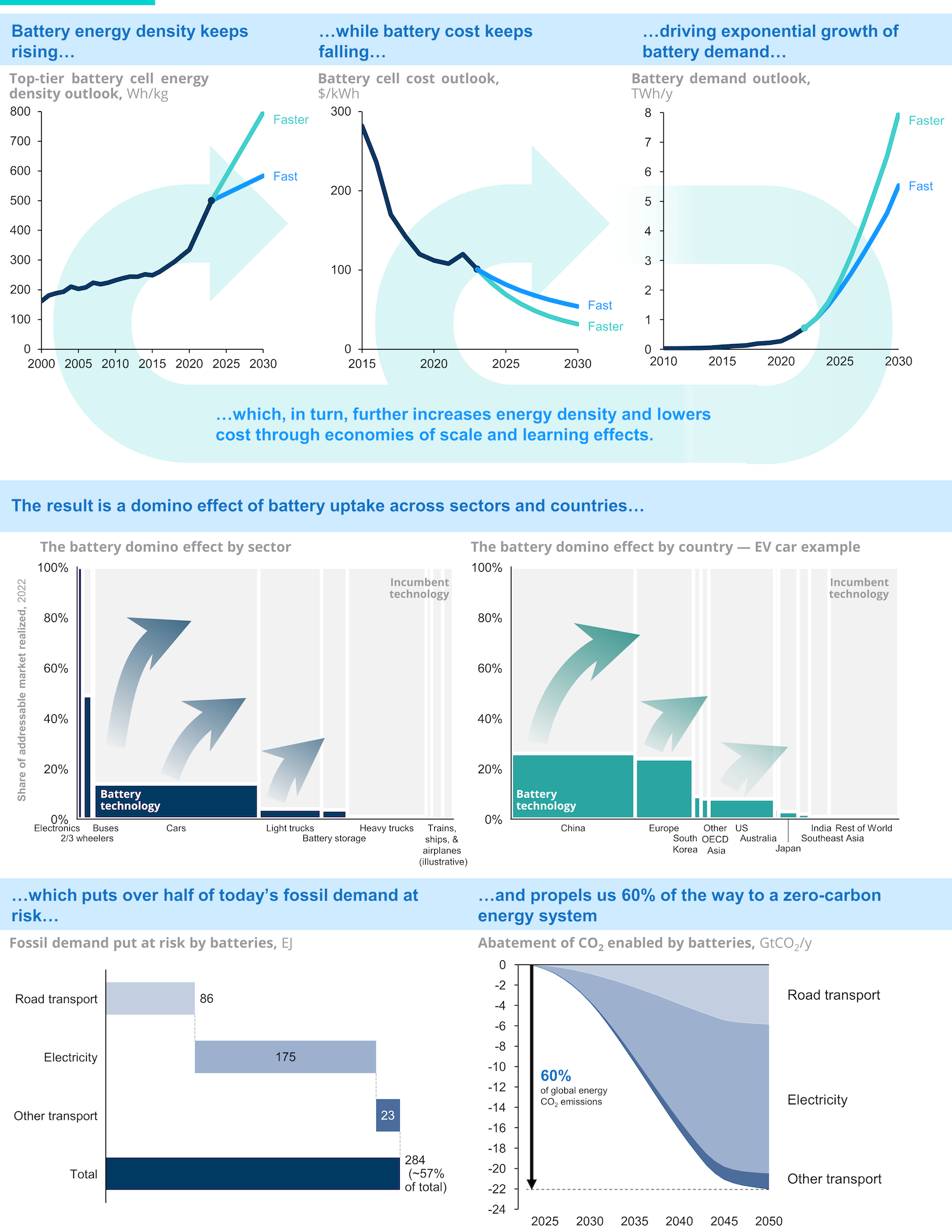The Battery Domino Effect — Charts
Support CleanTechnica's work through a Substack subscription or on Stripe.
The third report of the X-Change series was produced by RMI in partnership with the Bezos Earth Fund and is a contribution to Systems Change Lab. These reports analyze the exponential growth of renewable energy technologies, demonstrating why and how major areas of the global energy system are achieving faster change than many realize. Download the report here.
In X-Change: Batteries, RMI highlights the remarkable, exponential growth of battery sales, which is driven by a domino effect of battery technology adoption that cascades from country to country and sector to sector. This battery domino effect is set to enable the phase out of over half of global fossil fuel demand, and be instrumental to abate transport and power emissions, propelling us over 60 percent of the way toward a zero-carbon energy system.
At the core of the success of batteries lies a reinforcing feedback loop between market scale, cost, and quality. As the battery market grows, unit cost keeps falling and quality keeps rising.
This feedback loop is fueling a domino effect of adoption. As one sector scales up demand, the cost and quality improvement feedback loops enable batteries to become attractive in the next sector. Batteries started in consumer electronics, moved to motorbikes and buses, and then into cars. Now they are moving into stationary electricity storage and trucking and will be ready to enter short-haul ships and planes by 2030.
Once new battery technology is successful, it jumps geographies. The shift of batteries into the car market was started by early adopters — China is the largest domino to fall — and the transition is now shifting across the rest of the world, from Europe to the United States, from Southeast Asia to India. As the domino effect gains momentum, batteries will become the biggest global clean tech market — larger even than wind turbines or solar panels.
Change does not happen by itself though. Batteries got this far through the concerted efforts of companies, governments, researchers, and climate advocates. Continued growth will require continued effort. The path ahead for batteries is clear, but we do still need to walk it.
Originally published on RMI.
By Daan Walter, Kingsmill Bond, Sam Butler-Sloss, Laurens Speelman, Yuki Numata, Will Atkinson
Sign up for CleanTechnica's Weekly Substack for Zach and Scott's in-depth analyses and high level summaries, sign up for our daily newsletter, and follow us on Google News!
Have a tip for CleanTechnica? Want to advertise? Want to suggest a guest for our CleanTech Talk podcast? Contact us here.
Sign up for our daily newsletter for 15 new cleantech stories a day. Or sign up for our weekly one on top stories of the week if daily is too frequent.
CleanTechnica uses affiliate links. See our policy here.
CleanTechnica's Comment Policy


